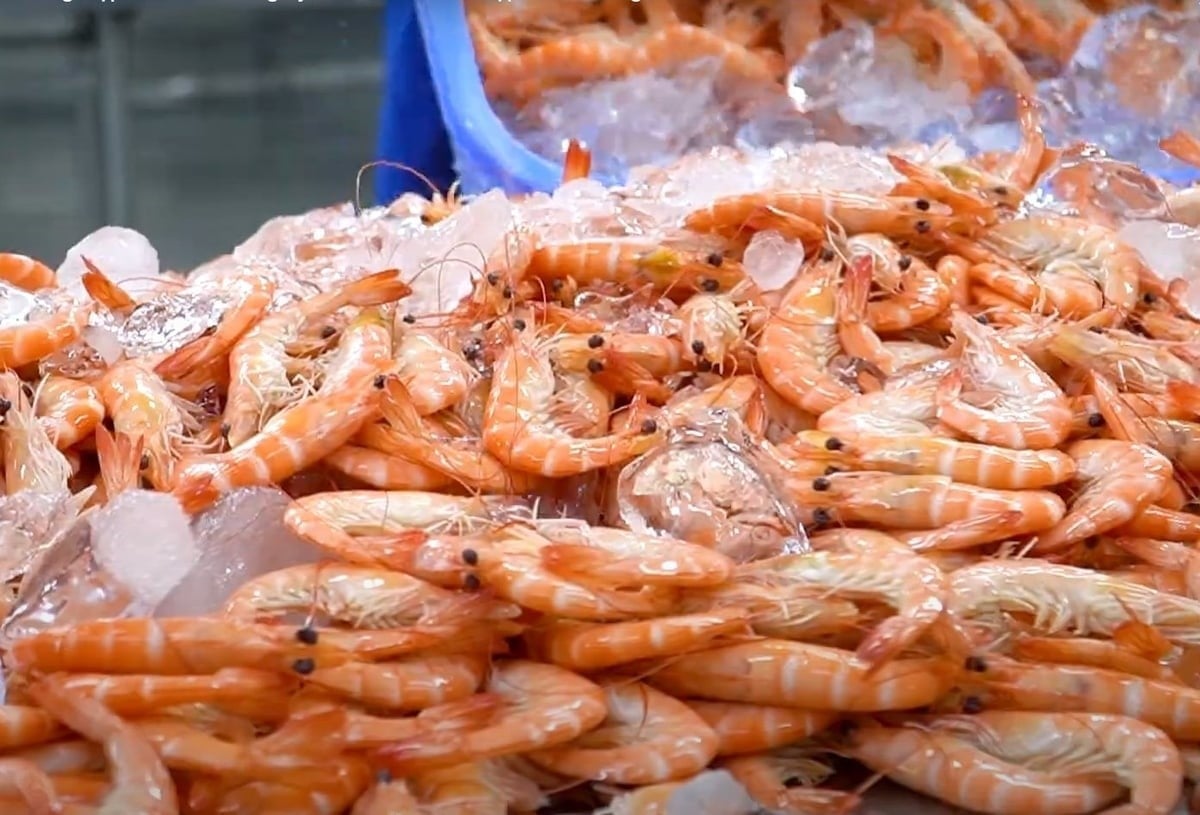December 30, 2025 | 16:08 GMT +7
December 30, 2025 | 16:08 GMT +7
Hotline: 0913.378.918
December 30, 2025 | 16:08 GMT +7
Hotline: 0913.378.918
As Vietnam's shrimp exports face pressure from trade defense measures, particularly the threat of reciprocal tariffs being imposed by the U.S., seeking and expanding into potential export markets has become a matter of survival for shrimp enterprises. In this context, Australia is assessed as a market with stable growth potential that aligns with the industry's strategy to enhance added value.
According to Ms. Phung Thi Kim Thu, shrimp market expert at the Vietnam Association of Seafood Exporters and Producers (VASEP), Australia is currently one of the most promising markets that align with the shrimp industry's strategy of developing deeply processed products to enhance added value. “Australia not only maintains steady demand but also highly appreciates high-quality shrimp with clear traceability. This is an advantage that Vietnamese enterprises should fully leverage,” Ms. Thu emphasized.

Vietnam's shrimp exports to the Australian market continuously increase in the first months of the year. Photo: Son Trang.
In fact, Australia is now Vietnam's fifth-largest single market for shrimp, accounting for roughly 7% of the country's total shrimp export value. In the first four months of 2025 alone, shrimp exports to Australia reached nearly USD 77 million, up 8% compared to the same period last year.
During the 2019-2024 period, Vietnam's shrimp export turnover to Australia increased consistently, from USD 127 million to over USD 240 million. Whiteleg shrimp accounts for 95% of export volume, with processed products such as shrimp skewers, shrimp dumplings, steamed shrimp, and peeled shrimp accounting for around 40% of the total turnover. This reflects a consumption trend toward convenient, value-added products, a segment that aligns well with the existing processing capabilities of Vietnamese enterprises.
According to Ms. Kim Thu, Vietnam's shrimp is enjoying significant advantages in the Australian market, largely thanks to the implementation of various Free Trade Agreements (FTAs), including the Comprehensive and Progressive Agreement for Trans-Pacific Partnership (CPTPP), the Regional Comprehensive Economic Partnership (RCEP), and the ASEAN-Australia-New Zealand Free Trade Agreement (AANZFTA). These FTAs not only reduce tariffs but also facilitate customs clearance, improve supply chain access, and promote standard transparency.
In addition, the Comprehensive Strategic Partnership between Vietnam and Australia, established in March 2024, provides a solid political foundation to further strengthen bilateral cooperation in the agricultural and fishery sectors.
With processed seafood consumption in Australia increasing by an average of 6–8% annually, along with rising demand for convenience food and a large Vietnamese community, Ms. Thu believes Australia is a market suitable for Vietnam's processed shrimp products.
“If Vietnamese businesses can fully capitalize on this market, Australia could become a strategic driver to help the shrimp industry maintain its growth momentum, especially at a time when traditional markets such as the U.S. are becoming less accessible due to tariff barriers,” she added.
3 scenarios for seafood exports
According to the Vietnam Association of Seafood Exporters and Producers (VASEP), if the U.S. decides not to impose reciprocal tariff (0% tariff rate) after July 9, Vietnam’s fisheries sector could still achieve its export target of USD 10 billion, on par with 2024.
However, under a scenario in which reciprocal tariffs are set at 10%, total export turnover could drop by approximately USD 500 million, falling to USD 9.5 billion. The higher cost of Vietnamese products in the U.S. market would weaken their competitiveness compared to rival suppliers.
In a worst-case scenario, where reciprocal tariffs exceed 10%, Vietnam's seafood exports may only reach USD 9 billion or possibly even less.
Translated by Thu Huyen
/2025/12/29/2812-1-182339_699.jpg)
(VAN) The price of mangrove forest carbon credits is high because this forest type not only delivers significant environmental value but also plays a crucial role in addressing other issues.
/2025/12/29/5840-0-115141_514.jpg)
(VAN) From 2026, many EU markets will require shrimp to be electrically stunned before ice immersion, forcing exporters to change technologies to retain market share.
/2025/12/28/4951-2-104623_113.jpg)
(VAN) Rubber exports are forecast to remain under downward pressure in the coming period, as global rubber consumption shows signs of slowing, according to ANRPC's projections.
/2025/12/28/5120-1-093308_94.jpg)
(VAN) Many agricultural products are of sufficient quality to join global supply chains, yet fail to pass the first gateway when entering international markets due to packaging and information in English.
/2025/12/27/2453-2-172141_426.jpg)
(VAN) The sharp decline in the number of EU warnings in 2025 is regarded as a positive signal for the future orientation of Viet Nam’s agricultural exports.
/2025/12/27/1547-2-220434_536.jpg)
(VAN) For many businesses, exporting is a costly trial. But for those choosing a long-term path, small orders are a way to keep markets and learn the rules.
/2025/12/27/2522-1-090748_662.jpg)
(VAN) The 'Large-Scale Rice Field' project has been implemented in An Giang across a total area of more than 5,582 ha, comprising 73 large-scale fields and attracting the participation of 2,027 farmer households.